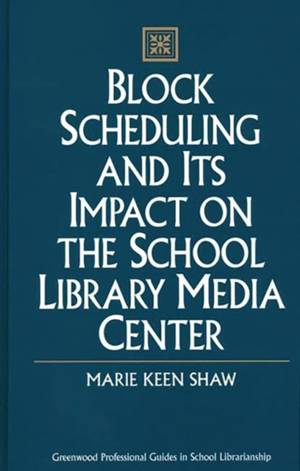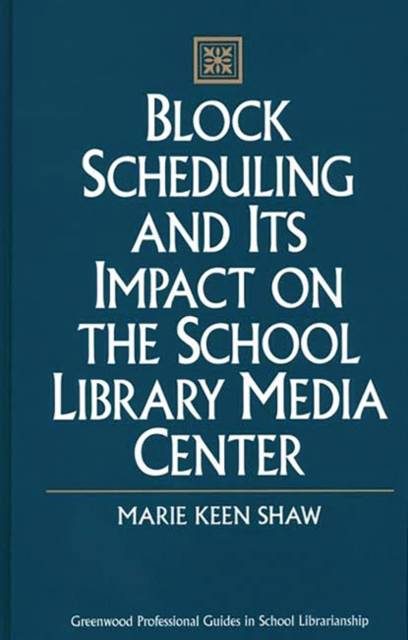
- Retrait gratuit dans votre magasin Club
- 7.000.000 titres dans notre catalogue
- Payer en toute sécurité
- Toujours un magasin près de chez vous
- Retrait gratuit dans votre magasin Club
- 7.000.0000 titres dans notre catalogue
- Payer en toute sécurité
- Toujours un magasin près de chez vous
Description
Across the country educators are facing the challenge of restructuring the secondary school to meet the needs of students in the twenty-first century. Block scheduling provides sustained time and fosters an environment for active and experiential learning, a key to student success in life. The author, who has spearheaded the adoption of block scheduling in her school's library media center, has prepared a complete guide for library media specialists contemplating or moving to block scheduling. In preparing this guide she has incorporated the experiences of twelve secondary school libraries across the country that have also moved to block scheduling. Step by step, this guide walks the library media specialist through planning, networking, curriculum and instruction, professional development, technology, and assessment. Practical suggestions, forms, lesson plans, and case studies of other media centers that have successfully adopted block scheduling will help the library media specialist to make the transition to the block.
Block scheduling places a high demand on staff, materials, and information technologies. Shaw stresses that networking of people and resources is essential to successful adoption of block scheduling. She takes the reader through the planning and transitional phases of a high school adopting block scheduling and addresses concerns about instructional change, ongoing curriculum, and the role of the library media specialist as a teacher of information technology. She provides ideas on where to find professional development and how to network with other library media specialists with expertise in the block and offers practical suggestions on resource sharing, study hall, flexible scheduling, budget, collection development, substitute teachers, and assessment techniques.Spécifications
Parties prenantes
- Auteur(s) :
- Editeur:
Contenu
- Nombre de pages :
- 256
- Langue:
- Anglais
- Collection :
Caractéristiques
- EAN:
- 9780313304941
- Date de parution :
- 28-02-99
- Format:
- Livre relié
- Format numérique:
- Genaaid
- Dimensions :
- 163 mm x 241 mm
- Poids :
- 517 g

Les avis
Nous publions uniquement les avis qui respectent les conditions requises. Consultez nos conditions pour les avis.






